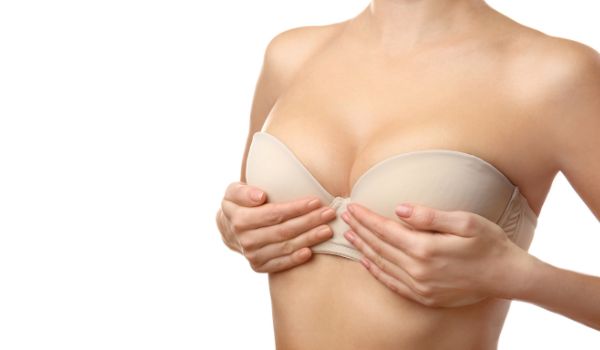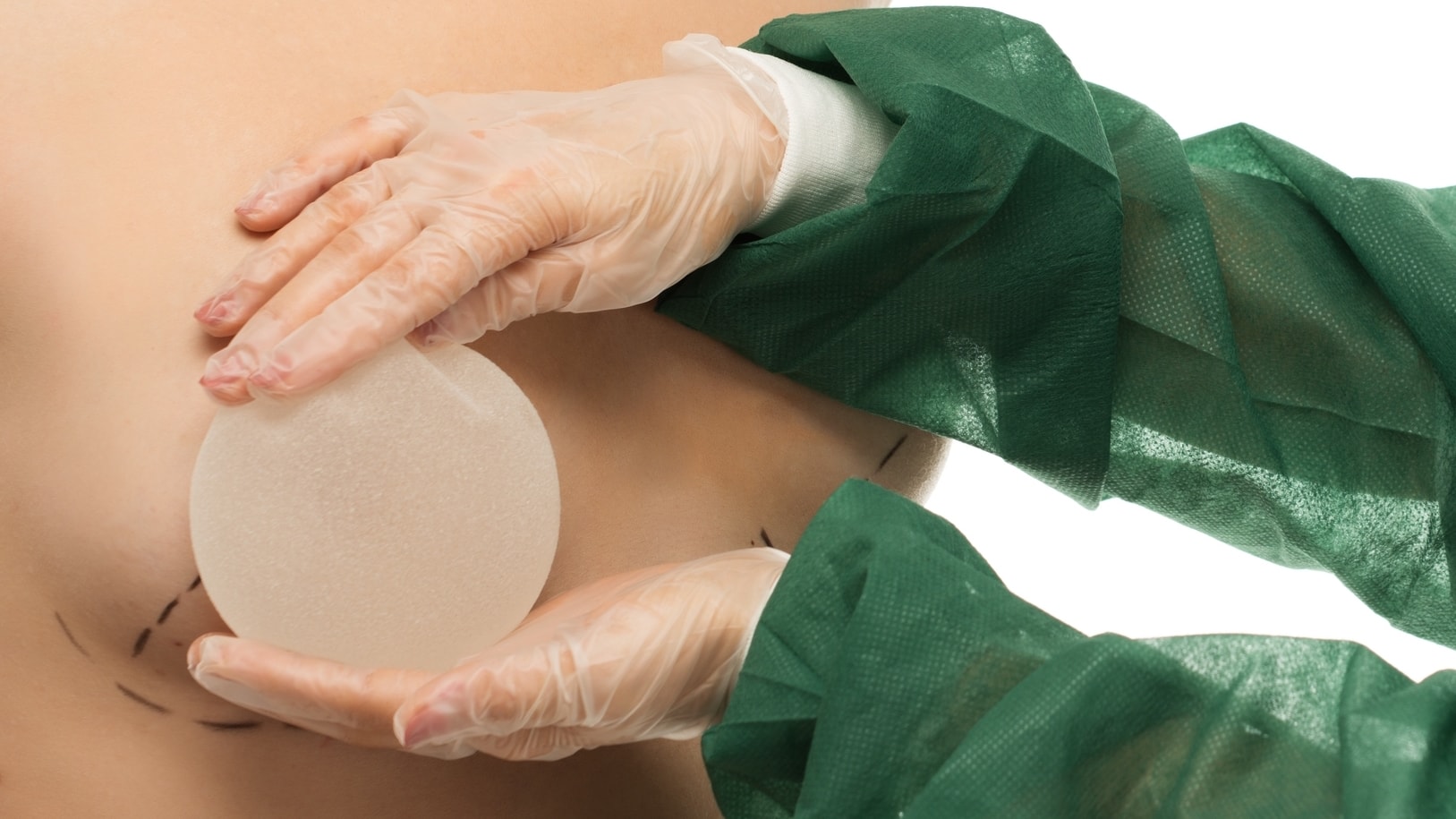Breast Augmentation: Above vs Below Muscle Implant Placement
Breast implant position is important in achieving the desired results after a breast augmentation. The choice of breast implant positions are submuscular (under or behind the muscle), subglandular (in front of the muscle, under the glandular tissue) and dual plane (A bit of both).
Above-the-muscle implants are more suitable for patients with substantial natural breast tissue and lean athletic patients. Conversely, below the muscle implants might be a better option for patients who don’t have enough natural breast tissue or who don’t want a significant increase in breast size.
Patients who opt for subglandular breast implants can benefit from a clearer cleavage outline, bigger implants, and a faster recovery period. Alternatively, submuscular implants can reduce the risk of capsular contracture, lower risk of infection, less mammography interference, and more natural looking results.
Dr Muhammad Salman Khan for breast surgery. He has profound knowledge of breast anatomy and is highly skilled in performing different breast surgeries. Dr Muhammad Salman Khan can help guide you towards the best implant placement choice that can give you the most natural and long-lasting results.
Simplified Breast Anatomy
Understanding the anatomy of your breasts can help you understand how breast implants can be positioned during your surgery.
The breast is made up of 3 main types of tissue:
- Glandular tissue: Contains the glands and ducts responsible for producing and transporting breast milk
- Fatty tissue: The fat or adipose tissue gives the breast its volume
- Connective tissue: Surrounds and holds everything together and gives the breast its shape and firmness.
Moreover, your breasts lay on top of the chest wall muscles, also known as the pectoral muscles and over your rib cage. The shape of your rib cage will also determine your final result.
Different Breast Implant Placements
Before your breast implant surgery, Dr Muhammad Salman will discuss the different options for implant placement. Then, together, you’ll decide what the best breast implant location for you is.
The location of your breast implant can be under the glandular tissue (subglandular), under the pectoral muscle (submuscular), or somewhere in between (dual plane).
1. Subglandular placement for breast implants
Subglandular, prepectoral, or over-the-muscle breast implants are placed beneath your glandular tissue and on top of your chest muscles. In this position, the implant would be supported by your pectoral muscles and covered by your fat and glandular breast tissue and your breast skin.
During breast augmentation surgery using a subglandular placement, your pectoral chest muscles will be left in place; Dr Muhammad Salman wouldn’t have to dissect them or move them to place your implant.
Dr Muhammad Salman usually recommends over-the-muscle breast implants for women with a fair amount of natural breast tissue that can give the implant good coverage. Placing the implants above the chest muscles instead of under them, gives Dr Muhammad Salman more room to place larger, more glamourous implants during breast surgery.
2. Submuscular placement for breast implants
In certain cases, a submuscular implant placement might be preferred over a subglandular position.
Submuscular breast implants are inserted deeper under the chest muscle. In this placement, the implant will be covered by both your pectoral muscle and your glandular breast tissue.
Unlike the subglandular breast implant, the placement of an implant under the muscle involves the precise dissection and manipulation of your chest muscles. The pectoral muscle is pulled forward to create a pocket so that the implant can be inserted beneath the muscle.
Dr Muhammad Salman may recommend under-the-muscle breast implants instead of subglandular implants if you don’t have substantial natural breast tissue and aren’t looking to get very large implants.
3. Dual plane placement for breast implants
Another popular option is dual plane breast implants. This is essentially a mix between the submuscular and subglandular implant placement.
During dual plane placement, the implant is placed beneath the muscle, however, the lower part of the implant is released from the muscle. As a result, the upper part of the implant will be covered by your pectoral muscle while the lower part will be covered only with your breast tissue.
Dr Muhammad Salman recommends the dual plane approach for women who do not have enough natural breast tissue but are looking to get fairly large implants. It can be regarded as the best of both positions.

Each breast implant placement can offer certain benefits for different patients.
You might be a good candidate for subglandular placement for breast implants in case:
- You have a fair amount of natural breast tissue
- You want to keep your chest wall muscles undisturbed (you’re an athlete or bodybuilder)
On the other hand, you may be a suitable candidate for submuscular breast implants if:
- You’re slim and/or don’t have substantial natural breast tissue
- You’re a breast cancer survivor and/or have previously had extensive breast resection
- You don’t want very large implants
- You want a longer lasting result and a more natural look
Above-the-muscle Placement Breast Implant Advantages
- Bigger implants: Your skin and glandular tissue have more room to stretch than your chest wall muscles. Therefore, you can get a larger breast size with subglandular implants than with submuscular ones
- Less invasive approach: The chest muscles are left in place and intact when the implant is placed on top of the chest muscle instead of beneath it. This makes the over-the-muscle placement less invasive than the under-the-muscle placement. As a result, you’ll feel less pain and will be able to recover faster with a subglandular breast implant.
- Lower risk of distortion of the implant: When the implant is positioned beneath the pectoral muscle, it will move when the muscle contracts. Consequently, the overlying skin and nipple might also move to create an unpleasant appearance in the breast known as animation deformity. Your breasts will be less likely to show distortion or animation deformity when you flex your chest muscles when the implant is on top of your muscle rather than under it
- Better cleavage outline: Since a subglandular implant placement is covered by flexible fatty breast tissue and not a rigid chest muscle, you might have a more pronounced cleavage than after a submuscular implant placement
Below-muscle Placement Breast Implant Advantages
- Lower risk of capsular contracture: Breast scar tissue may sometimes form a capsule around the breast implant and become tightened. This tightened capsule of scar tissue is known as capsular contracture. When the implant is placed under the muscle instead of above it, the muscle forms a barrier between the implant and the breast’s soft tissue. This makes it less likely for the breast tissue to harden and cause this condition
- Lower risk of infection: Submuscular implant placement is considered a safer breast augmentation technique. The more sterile the surgical approach is, the less likely you’ll have an infection after breast surgery. The 14-point plan for implant surgery helps surgeons improve sterility.
- Better mammography results: In contrast to subglandular implants, submuscular ones will be placed in the back of the breast (behind the muscle) and shouldn’t interfere with the quality of your mammogram images
- Better nipple sensation: Unlike breast augmentation using subglandular implants, Dr Salman doesn’t have to dissect your breast tissue to place the implant beneath your chest muscle. Hence, your nipple’s blood supply and nerve endings won’t be damaged and you are more likely be able to maintain nipple sensation after your breast surgery
- More natural-looking results: The implant will be well hidden under your chest muscle so it would be less apparent. This below-the-muscle implant placement can give your breasts a smooth breast slope and a more natural breast look. It can also make your breast feel better to touch because the implant will not be right under the breast tissue but covered up by the chest muscle as well
Which Breast Implant Placement Is Best for Me?
The choice to get a submuscular, subglandular or dual plane breast implant placement is a highly personal one. It’s not just about what suits your body anatomy, it’s also about what suits your aesthetic goals and what sort of breasts you wish to end up with.
Moreover, if you want significantly bigger breasts with an enhanced cleavage outline, getting implants on top of the muscle might be a better option for you than getting them beneath your chest muscles. If you don’t want your breast implants to compromise your future mammogram results, you might want to get submuscular implants rather than subglandular ones.
Additionally, keep in mind that patients getting subglandular implants are more likely to heal and return to normal activity faster than with under the muscle implant placement.
As mentioned above, each breast implant location has its advantages and benefits. Dr Salman will thoroughly go through each implant placement option with you. He will help you understand the advantages and possible disadvantages of different breast implant positions. He will also discuss your aesthetic goals and needs in detail to help you decide what the best implant position for you is.
FAQs about Breast Implants Placement:
What are the disadvantages of subglandular breast implants?
- Despite their many advantages, above-the-muscle breast implants may have a few drawbacks. Since the breast implant will be directly in contact with your glandular breast tissue, subglandular implants carry a higher risk of capsular contracture (the soft tissue around the implant contracts and becomes thick). Moreover, a subglandular implant will only be covered by soft tissue which can make it more visible and can cause rippling on the surface of the breasts when you move. Implants placed above your chest muscle can also get in the way of your mammogram screenings making them more difficult to interpret.
What are the disadvantages of submuscular breast implants?
- The size of the breast implant can be limited if the implant is placed behind the muscle, which cannot stretch too much. So you may not be able to make your breasts substantially bigger. Moreover, below the muscle implants require the manipulation of the chest muscle. Consequently, your recovery period may be a bit longer with a submuscular implant than with a subglandular implant.
Can breast implants be combined with fat grafting?
- Absolutely. Composite breast augmentation, also known as hybrid breast augmentation, combines subglandular implants with autologous fat (fat from your own body) injections into the breast. The additional grafted fat can further improve your breast contour and emphasise your cleavage.
Do implants feel the same as natural breasts?
- How your breasts feel after you get an implant will depend on both the placement and type of implant. Below the muscle breast implants usually feel more natural to the touch than subglandular implants. On the other hand, there are certain types of breast implants, such as the “gummy bear” breast implants, that can mimic the feel of natural breast tissue even when they’re placed in a subglandular position.
Will my implants look bigger if I lose weight?
- Since your implants are not a natural part of your body, their size will stay the same whether you gain or lose weight. In case you lose significant weight, your breasts might appear bigger. Therefore, it’s important to maintain healthy body weight without considerable fluctuations following your breast augmentation surgery to make sure you get the best aesthetic results for as long as possible.

